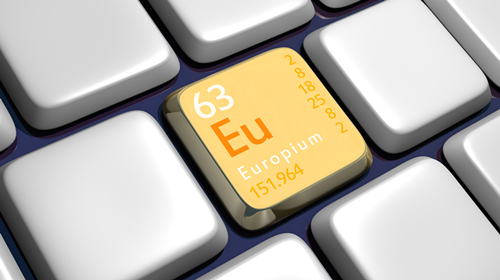
On December 5, 2023, the European Union Scientific Committee on Consumer Safety (SCCS) published the preliminary opinion(SCCS/1661/23) on Titanium Dioxide (TiO2). The deadline for comments is set for 6 February 2024.
The SCCS concludes the following:
(1) In light of the EFSA Opinion on genotoxicity concerns for E171, does the SCCS consider Titanium dioxide safe in oral cosmetic products?
From the provided information, the SCCS has noted that the titanium dioxide (TiO2) materials evaluated in this Scientific Advice belong to a wide range of grades (44 pigmentary and 40 nano grades) used in cosmetic products. The pigmentary grades differ from the food additive E171 in terms of crystalline forms, particle sizes, coatings, etc., with the exception of 13 uncoated pigmentary grades that can be considered equivalent to E171.
Having considered all the information (including that evaluated by EFSA, 2021), the SCCS believes that the available evidence is insufficient to exclude the genotoxicity potential of almost all of the types of TiO2 grades used in oral cosmetic products. The only exception is two nano grades (RM09 and RM11) for which the provided genotoxicity data indicate no genotoxicity concern. More information is, however, needed on the potential uptake and cellular effects of the nano grades in the oral mucosa to consider them safe for use in oral-care products.
More experimental data are needed from studies carried out under valid protocols and appropriate testing guidelines to exclude the genotoxicity potential of the selected representatives of the other grades of TiO2 (both pigmentary and nano) used in oral cosmetic products.
It is worth highlighting that the SCCS approach to risk assessment of TiO2 ingredients in orally used cosmetic products is slightly different from that of EFSA. This is because cosmetic products are not meant to be ingested orally, and any ingestion via the oral route can only be unintended and incidental. Keeping this in mind, the amounts of orally-ingested cosmetic ingredients can only be expected to be far lower than the amounts ingested when a TiO2 material is used as a food additive, which is consumed via intake of the food products. For the SCCS, the potential absorption/retention, translocation, and adverse effects of nanoparticles in the buccal mucosa are therefore important considerations for safety evaluation.
(2) In light of the EFSA Opinion, does the SCCS consider that previous Opinions issued by the SCCS on inhalation and dermal exposure to Titanium dioxide need to be revised?
The conclusions drawn in previous SCCS Opinions on dermally applied cosmetic products (SCCS/1516/13, SCCS/1580/16) remain unchanged for the TiO2 grades and the coatings evaluated in those Opinions. New data on dermal absorption will be required for other types of TiO2 grades and coatings that are not covered in the Cosmetics Regulation 1223/2009, and not covered by entry 27a in Annex VI.
According to the Cosmetics Regulation 1223/2009, the nanoform of TiO2 is already restricted under entry 27a of Annex VI as not to be used in applications that may lead to exposure of the end-user's lungs by inhalation. The conclusions drawn in the previous Opinions (and SCCS/1583/17, SCCS/1617/20) on the safety of TiO2 used in specific cosmetic products that may lead to exposure by inhalation also remain unchanged.
(3) If the estimated exposure to Titanium dioxide from cosmetic products is found to be of concern, SCCS is asked to recommend safe concentration limits for each category of products and type of use.
Since the genotoxicity hazard of almost all of the grades of titanium dioxide could not be excluded (with the exception of RM09 and RM11), the SCCS cannot recommend any safe limits for the materials when used in cosmetic products that could lead to oral or inhalation exposure, other than those already indicated in the previous SCCS Opinions (SCCS/1516/13, SCCS/1580/16 and SCCS/1617/20).
(4) In light of the potential removal of the E 171 purity specification from the food additives Regulation, the SCCS is requested to review and indicate the respective specifications for Titanium dioxide when used in cosmetics.
In view of the concerns on the potential genotoxicity of the TiO2 grades considered in this Scientific Advice, the SCCS believes that the Applicants should draw up a proposal for specifications of the different TiO2 grades used in those cosmetic products that could lead to oral and inhalation exposure. The SCCS will be able to assist the Commission in reviewing the proposal.
(5) Does the SCCS have any further scientific concerns regarding using Titanium dioxide in cosmetic products?
Studies have indicated that oral mucosal cells are prone to the uptake of nanoparticles (including TiO2 nanoparticles), as they may penetrate the mucous layer and may be internalized by the epithelial cells. Considering that some oral products containing TiO2 nanoparticles, such as toothpastes and mouthwashes, will be used every day and potentially more than once a day, further investigations are needed to exclude the risk to the consumer from long-term repeated exposures of the oral mucosa to TiO2 nanoparticles.
The SCCS also recommends that safety assessment of the pigmentary TiO2 grades used in cosmetics should take into account the fact that some of them contain a sizeable proportion of the particles in the nano-size scale – some over 50% (in terms of particle number, median constituent particle size).
If you need any assistance or have any questions, please get in touch with us via service@cirs-group.com.

